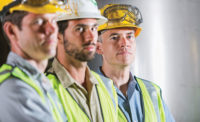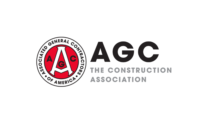Reprinted with permission from Zurich North America
Construction crews in many cities continued to raise cranes and swing hammers as much of the world shut down to stem the spread of coronavirus. While Boston and Pennsylvania ordered a halt to most construction projects, some other cities and states designated construction as an essential or crucial sector.
There is debate over the interpretation of government guidelines, and state and city mandates could change. In the meantime, in cities where construction work has continued, it’s not business as usual.
Many contractors and trades have adjusted project management and safety protocols to enable social distancing and enhance hygiene on job sites to help reduce the risk of COVID-19 for their workers and their communities.
“Contractors are trying to keep work moving on their job site while protecting their workers,” said Rick Zellen, a Construction Senior Risk Engineering Consultant for Zurich North America. “Proactive moves are being taken, beyond what’s mandated.”
Adding Shifts and Sequencing Trades
Some general contractors are staggering start times and lunch breaks for workers. “Some used to have one shift and now are going to two or even three shifts,” Zellen said. “This is to minimize the number of people on each shift so they can maintain the six-foot social distance requirement.”
In normal times, contractors work to sequence trade workers for efficiency and safety. They avoid what is known as stacking trades, where multiple trade workers are in the same space working on different tasks, in part to reduce dangers such as one worker dropping tools or materials on another. Now, social distancing makes trade sequencing an even higher priority.
At the gates of job sites, some contractors have stationed staff with no-touch thermometers to check workers’ temperatures when they arrive. The workers are asked to return home if they are running a fever, and those who are sick may be asked to self-quarantine for 15 days.
Cleaning Tools, Handles and Hands
It’s typical in construction to have composite crews consisting of one representative per trade on a site to tidy up for safety reasons at regular intervals. Now, in addition to making sure materials are stacked and stowed properly to help reduce hazards such as slips, trips and falls, some composite crews are also taking steps to optimize cleanliness.
“They’re addressing ways to keep the site free of the virus, making sure handwashing facilities are fully stocked and cleaning the handles of toolboxes and portable toilets, door knobs and ladder rungs,” Zellen said. “Some contractors also are renting more wash stations so that workers don’t have to walk far before they find one.”
Crews are also avoiding sharing tools, and they are thoroughly cleaning them between uses. Cleaning staff have been hired for some sites to sanitize offices and conference rooms in trailers daily.
Adding Virtual Meetings and Trainings
A CEO and president of one construction firm implemented twice-weekly virtual “fireside chats” to help address any worker concerns and encourage positivity. Another contractor is using tablets for safety training and orientation, emphasizing hygiene measures and social distancing.
“One of biggest things being communicated to workers is that it’s critical to follow guidelines both on the job site as well as off the job site when at home,” Zellen said, “avoiding having friends over, minimizing contact with other people and maintaining hygiene practices.”
Donating Masks to Help Health Workers
By following Occupational Safety and Health Administration Table 1 guidelines, many contractors and crews have reduced the need for their workers to wear N95 masks that filter out approximately 95% of particles in the air.
“When masks are used in construction, now they often opt for half-face or full-face respirators with cartridges instead of the ones that are needed now in hospitals,” Zellen said.
That’s one reason construction firms have been donating thousands of N95 masks for healthcare workers during the coronavirus crisis.
“There are a lot of innovative ways contractors and crews are trying to manage this potential risk,” Zellen said. “We all want to make sure we’re doing all we can to help people stay healthy.”







